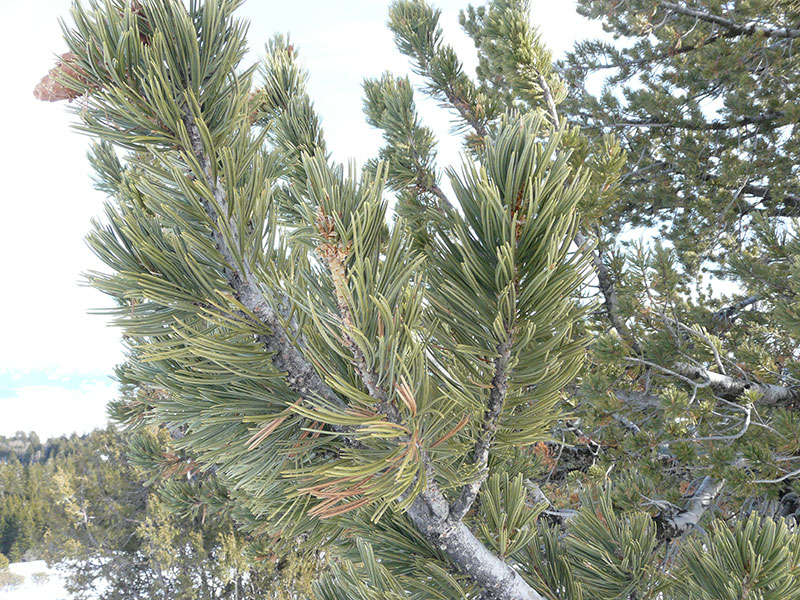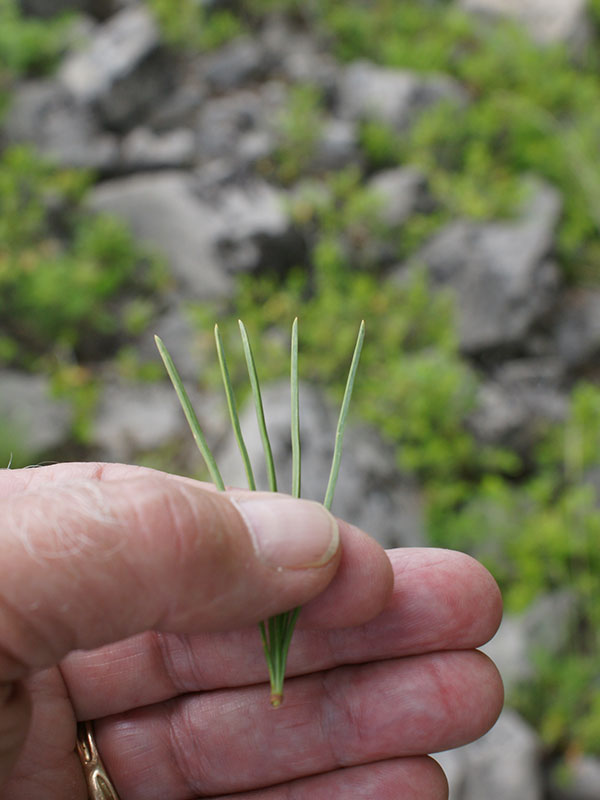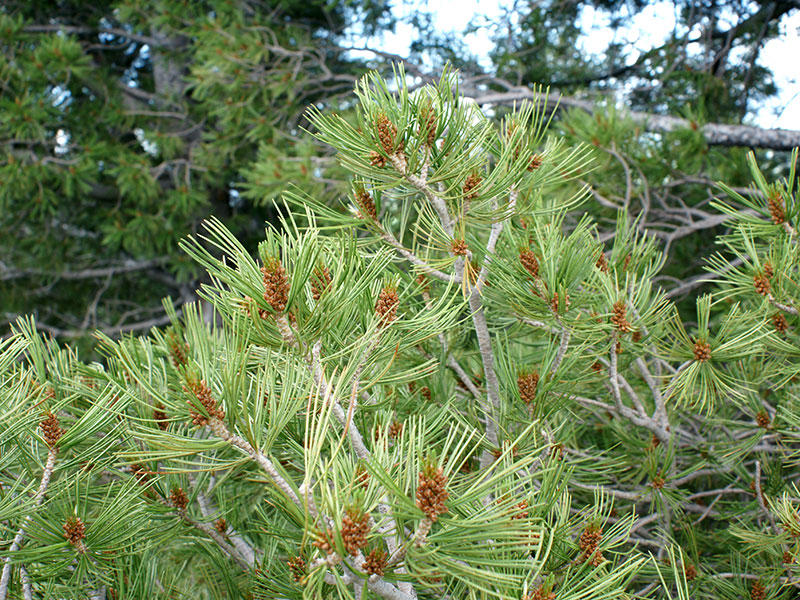Pinus flexilis / limber pine
- high elevation, rocky or talus, dry, high-stress habitat
- often – stunted and deformed by wind
- highly flexible branches
- needles in bundles (fascicles) of 5
- often – semi-rotted cones on ground below
Also known as: Rocky Mountain white pine, Rocky Mountain pine, limbertwig
See also: Pine trees, conifers and evergreens; Pinus contorta /lodgepole pine
Pinus flexilis is a member of the white pine group, found on windswept, rocky, full-sun, dry sites at high elevation. Its extreme tolerance is perhaps best manifested by its presence in the lava beds at Craters of the Moon.
As expected from that intro, limber pine is slow growing and tends to be much shorter than the lodgepole trees that grow under less extreme conditions at lower elevation. On the other hand, it is very long lived (well over 1000, perhaps 3000 years). Slow growth and long life make limber pine an extremely valuable contributor to the field of dendrochronology, the dating of ecological events using tree rings.
Both its common and Latin names reflect the fact that limber pine has long flexible branches that bend but don’t break under the weight of snow. Those branches are densely covered with long, dark, blueish-green needles (in a fascicle of 5 needles, but without a persistent fascicle sheath). The needles are considered “entire”, meaning they are smooth when rubbed gently in either direction.
Like all the other conifers in the area, limber pine is wind pollinated and produces copious amounts of pollen from male strobili (cones) in early spring. The female cones, after pollination, produce wingless seeds. The mature female cones are long-ish (4 to 6 inches), woody brown and open at maturity (i.e. they are not serotinous like lodgepole). The scale tips often have resin drops on them, but no prickles.
Through the season, the cones fall right under the mom and decay in the leaf litter with the scales attached. The expansion of a population to new areas, therefore, depends on birds, particularly Clark’s nutcracker which cache the seeds, losing track of some in the process.
Interesting bits – In the limber pine habitat, all nutrients are in short supply, and particularly nitrogen. Thus, it is interesting that a 2016 study found evidence that P. flexilis has a symbiotic relationship with nitrogen-fixing bacteria that inhabit the needles. While various trees (but not conifers) have such relationships with root nodule symbionts, leaf-level symbiosis of this type is unusual.
The rates of N-fixation in this case are quite low, but since limber pine persists in soils that are exceedingly N poor, endophytic leaf bacteria could represent a critical source of N for the trees and their ecosystem. In a related but earlier study limited to identifying leaf endosymbionts, the same authors found that the same bacteria (called AAB, or acetic acid bacteria) are found and dominate the needle microbiome in Engelmann spruce (Picea engelmanii).
| Family | |
|---|---|
| Inflorescence type | |
| When? | |
| Where? |



